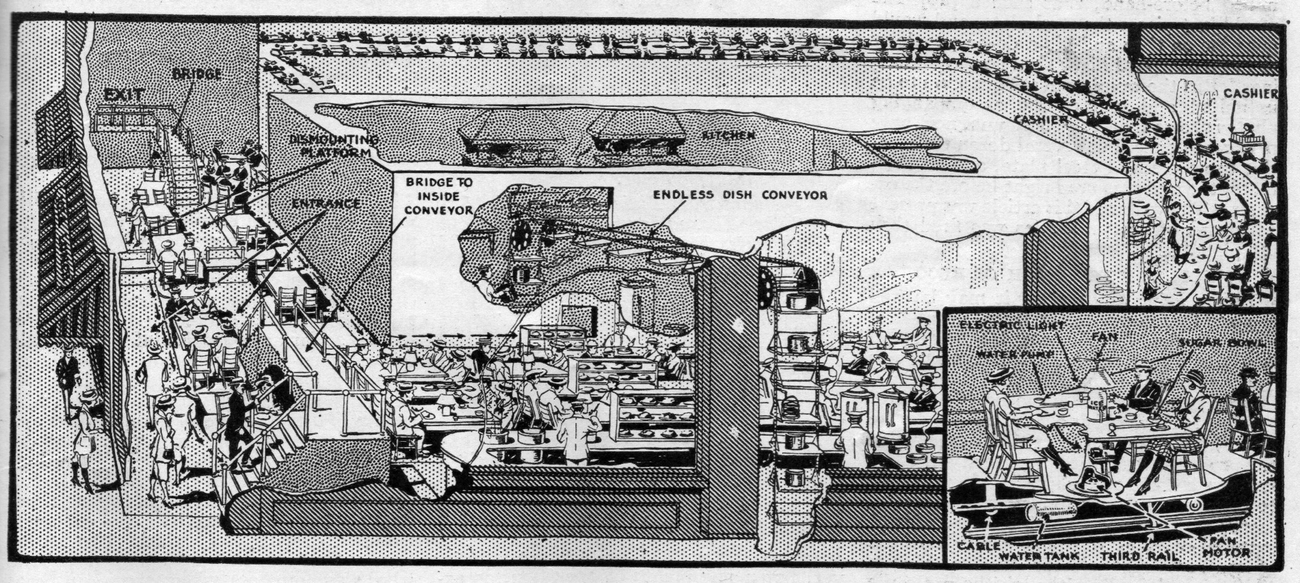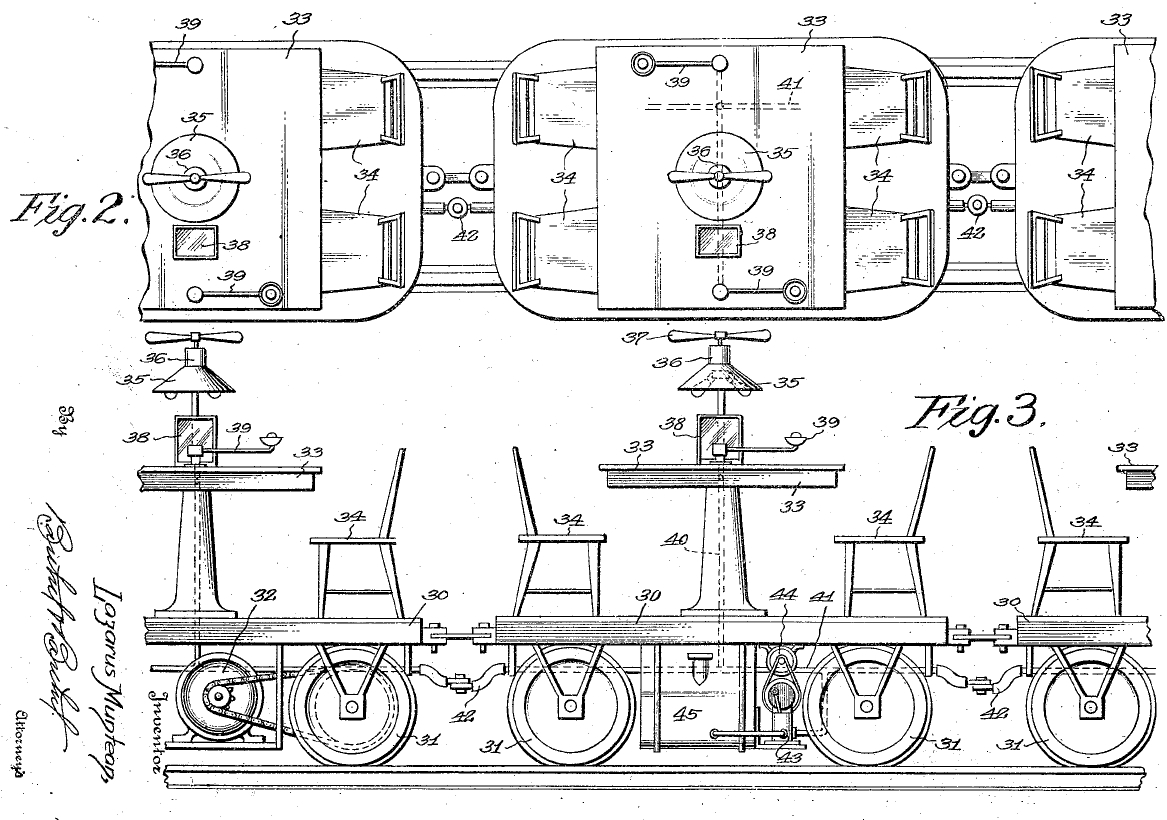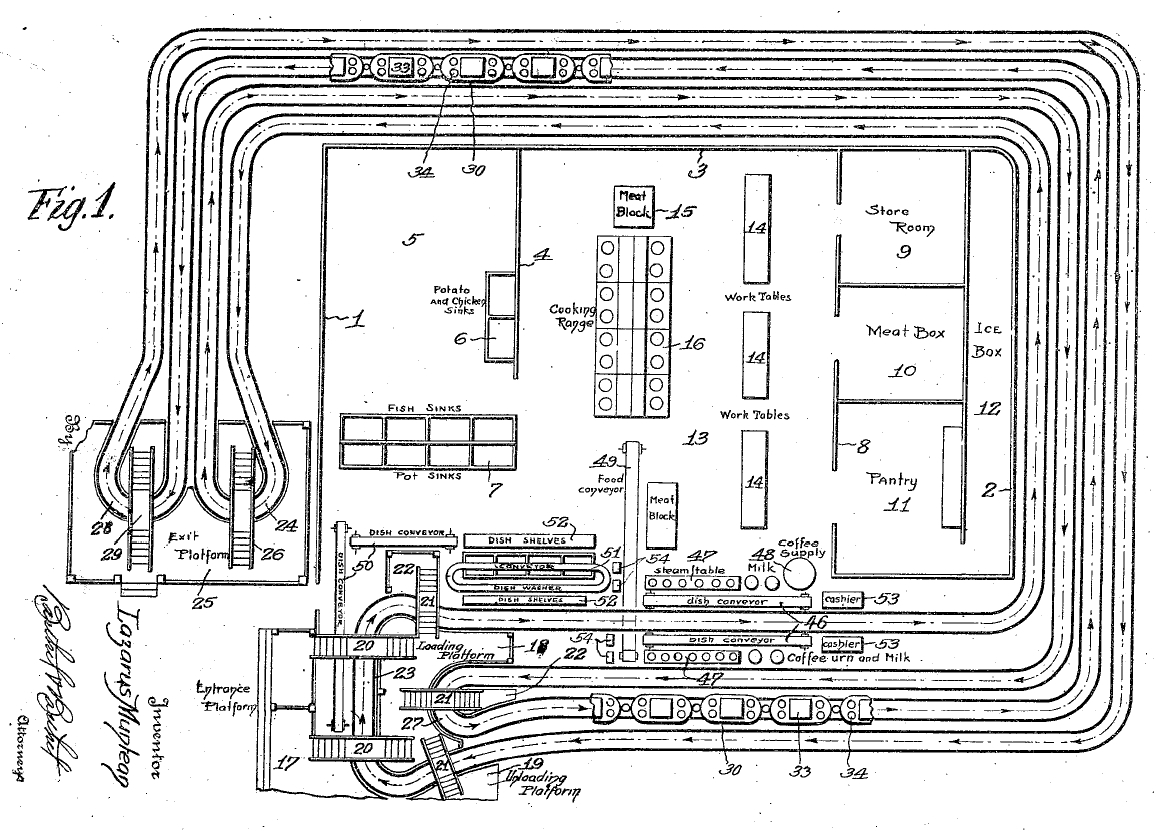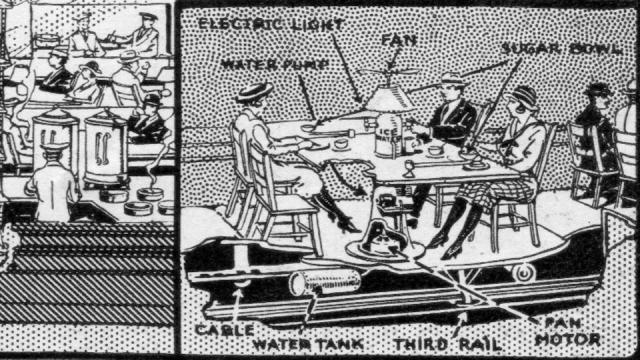Today’s restaurants love automation. Whether it’s conveyor belt sushi, iPad ordering or drones that bring your food right to the table, restaurant owners are always looking for a gimmick that attracts customers and might just save them some money. However, back in the 1920s, an inventor in Michigan had his own idea for automating the restaurant of the future — instead of bringing the food to the customers, how about bringing the customers to the food?
In 1920, an inventor in Highland Park, Michigan named Lazarus Muntean devised a restaurant concept called the “moving platform lunch” that revelled in the efficiency of modernist eating. The proposed restaurant may not serve raw meat torn by trumpet blasts, a polyrhythmic salad, chicken with ball bearings, or anything else that the big-F Futurists were touting as the food of the future. But Muntean’s restaurant idea did have one thing that the Futurists loved: movement.

The restaurant was cafeteria style, with a wide variety of meat, veggies and desserts. But rather than walking through a line of food, grabbing what you want and sitting down at an old-fashioned stationary table, diners were sitting at tables that moved all by themselves along a track. Customers would enter the restaurant and ascend a staircase where they could wait for an empty seat at a row of passing tables. The kitchen was situated at the middle of the restaurant and the tables would make their way slowly around the outside, weaving through serving counters with different plates of food which were ready for the grabbing.
Muntean applied for a patent for his restaurant system in 1920 and was granted one in 1921. Magazines like Science and Invention and Literary Digest ran illustrations of the concept, though many expressed scepticism that such a restaurant would ever see the real world.
The September 1921 issue of Science and Invention magazine included the illustration above.

The tables were imagined to be moving along on a track, but not all the amenities were left on the serving counters. Hidden below each table-car would be a water pump that provided water at the push of a button.
From Science and Invention magazine:
The individual dining tables which move along on the platform are most ingeniously designed. Each table is fitted with an electric lighting fixture and shade as well as electric motor operating a fan. In the centre of the table the inventor pro- vides a fountain from which ice cold drinking water may be drawn from, the spigot, the ice and water being contained in a compartment under the platform. The drinking water system is operated by an electric motor-driven pump. Thus, if the diner wants a breeze, he has but simply to push a button and the fan starts up, or if he wishes more light he clicks on the lamps in the electrolier.
Necessary electric current is supplied to the motors and lamps on each table thru a third rail and contact shoe arrangement, as the drawing clearly shows.
The only real problem with Muntean’s plan seems to be that there wasn’t really much to see.
Forty years later, the revolving restaurant was the hippest eating establishment for any red-blooded futurist of the 1960s. When all that steel and glass and plastic were rotating at the top of some skyscraper, you weren’t just eating in a restaurant, you were eating in the future. And whether it was located in the Space Needle overlooking Seattle or the Tower of the Americas overlooking San Antonio, it usually had one hell of a view.
Instead, Muntean’s plans seemed more akin to a story arc from “The Larry Sanders Show” in which Hank, the loveable but oafish sidekick of a fictional TV talk show, had a plan to open a revolving restaurant. The only problem? His restaurant was at ground level and had no windows. Muntean’s vision for a restaurant of the future seems to suffer from the same nagging question as Hank’s fictional restaurant — what’s the point?
The best argument in favour of moving diners instead of food was the potential for pretending that they were eating in a railroad dining car — an idea that Science and Invention promoted, noting that you could paint the walls of the restaurant with waterfalls, mountains and other “scenic embellishments.”

Sadly, I haven’t found any evidence that Muntean’s restaurant-tables-on-rails idea was ever tried out in the real world. But were he alive today, you can probably bet he’d figure out a way for the customers to be riding those drone waiters instead of being served by them.
Pictures: September 1921 issue of Science and Invention magazine and Google Patents
